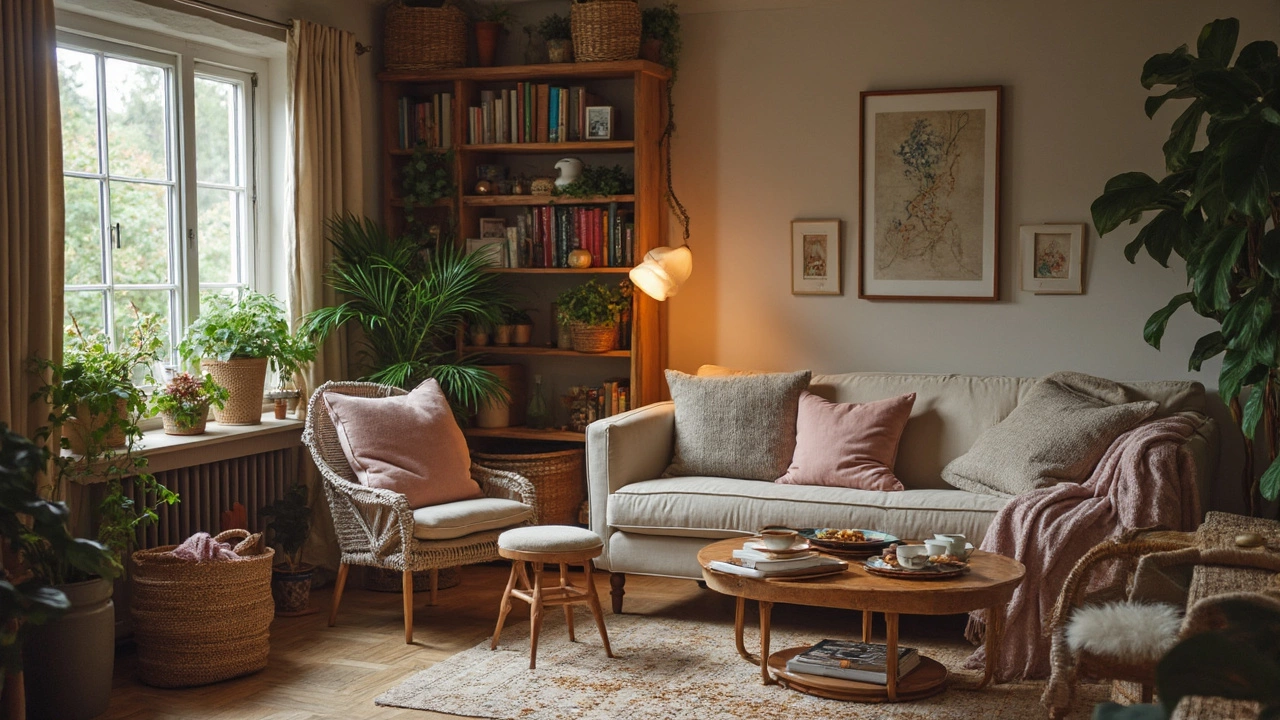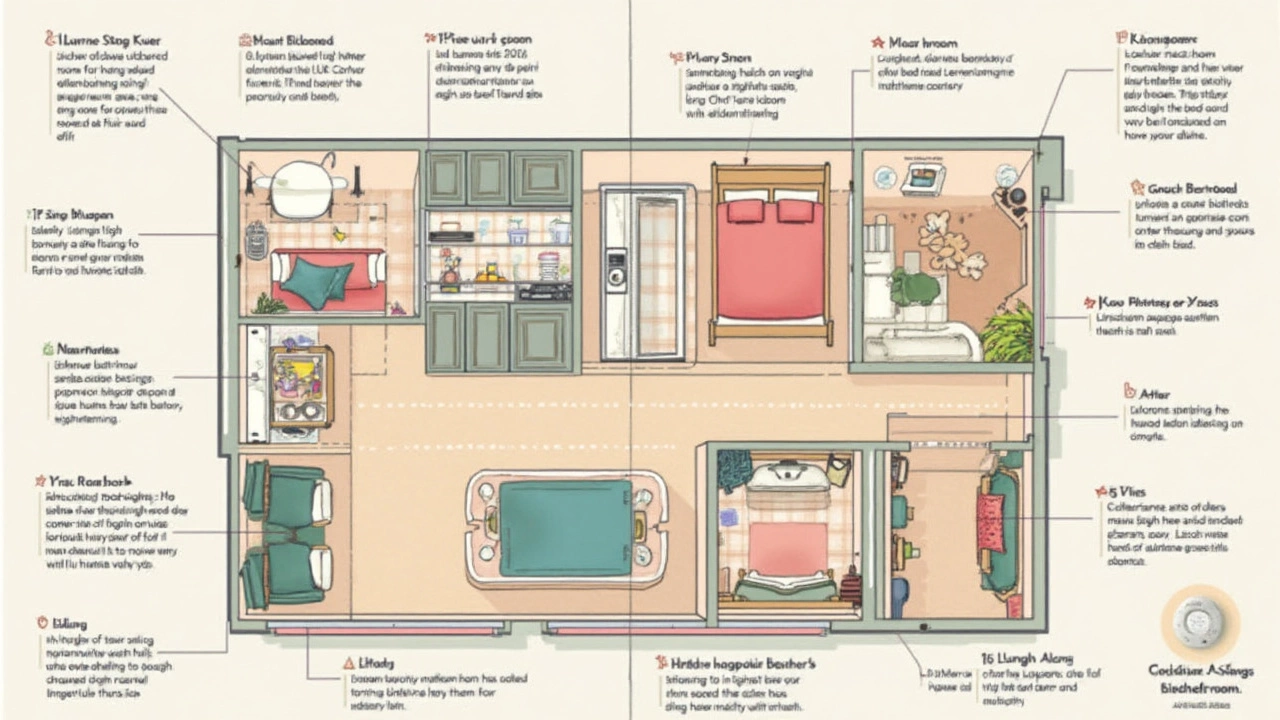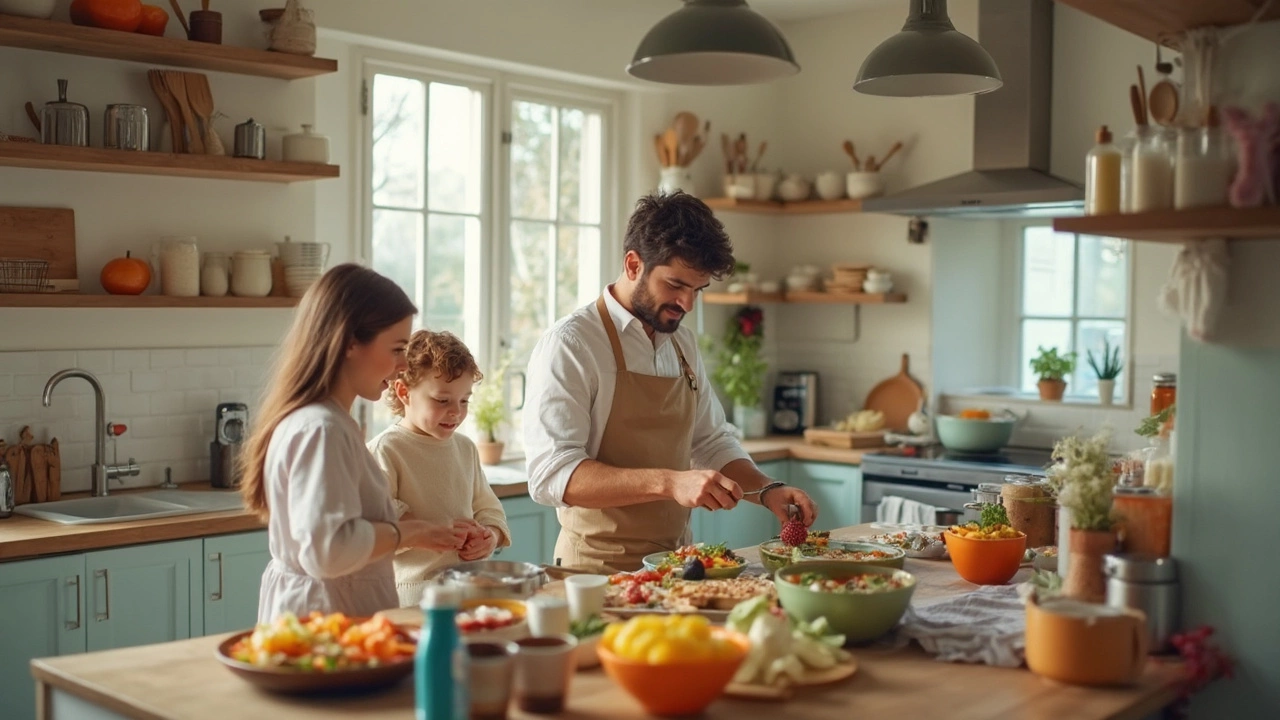You really find out what matters at home the first time you run out of toilet paper—or when you can’t find a working flashlight during a blackout. The stuff we call home essentials isn’t glamorous, but it absolutely makes life easier. Ever tried cooking a big meal with only one pot and a dull knife? Not fun. That’s the difference the right tools can make.
Most people pile up things they never use but somehow miss the basics. Getting the right mix of necessities means less stress and fewer "where did I put that?" moments. It’s not about filling every shelf or buying trendy gadgets. It’s about what makes day-to-day life actually work. It’s simple stuff: that one extension cord you always need, those storage bins that keep closets from exploding, and the cleaning wipes that save you when you spill coffee on the couch (again).
Let’s get into the real, everyday home essentials—the ones that save your time, keep your space livable, and maybe even make you look a little more put-together when someone drops by unannounced.
- Start with the Basics: What Every Home Needs
- Kitchen Gear That Actually Gets Used
- Clean and Organized: Winning at Everyday Life
- Comfort and Ambiance: Living Well at Home
- Safety and Smart Upgrades
Start with the Basics: What Every Home Needs
Before you dive into the fancy gadgets, you have to nail the basics. It’s almost funny how often we forget those—but then again, who thinks about bandages until there’s a cut or napkins until there’s a mess? The right home essentials keep the chaos at bay and make sure you’re not scrambling at the worst moment.
Let’s get concrete. Almost every home should have these items in easy reach:
- Basic first aid kit (think bandages, pain relievers, antiseptic wipes – the works)
- Flashlights (bonus points for extra batteries)
- Trash bags and cleaning wipes (because spills happen and trash always piles up fast)
- Simple tool kit (just a hammer, screwdrivers, pliers, and a measuring tape go a long way)
- Laundry supplies like detergent and a drying rack or basket
- Toilet paper, paper towels, and tissues—don’t run out, just don’t
- Extension cords and power strips
People joke about the classic “Is there toilet paper?” panic, but it’s real—the American Cleaning Institute found that 89% of people feel stressed when they’re low on key supplies like TP and soap. Why risk it?
If you’re moving into a new place, don’t overthink the starter kit. Just pick up the core stuff—skip the disco toaster until there’s food prepped and a plunger standing by. Here’s a handy table that shows what people reach for the most when they move in, based on a 2023 Home Organization Survey:
| Essential | % People Who Said It's Crucial |
|---|---|
| Toilet Paper | 94% |
| Cleaning Supplies | 91% |
| Basic Tools | 86% |
| Laundry Detergent | 79% |
| Flashlight | 66% |
Jason Chang, lead organizer at Fast Tidy NYC, put it simply:
“It’s not the big stuff that catches you off guard, it’s running out of light bulbs in the middle of dinner or realizing you don’t have a plunger when the toilet’s clogged.”
For less than a dinner out, you can grab a starter set of all these basics and instantly avoid dozens of headaches. Simple? Yes. But the essentials really are the best insurance for a smooth home life.
Kitchen Gear That Actually Gets Used
Most kitchens have a weird mix of gadgets nobody touches and a tiny handful of home essentials that get used every single day. It’s worth taking a second to look at what tools really pull their weight versus that bread maker collecting dust on the top shelf.
The truth? You don’t need a bunch of stuff, but you do need a few things that can handle real cooking and daily hustle. According to a 2024 study by the Home Organization Institute, about 78% of people use just 10 main kitchen items for 90% of their meals. So, what are these items?
- Chef’s knife: A sharp, comfortable knife makes everything easier, from chopping veggies to slicing meat. Skip the big knife block set—one solid chef’s knife does the trick.
- Cutting board: Wood or plastic, just make sure it’s big enough. It saves your counters and your nerves.
- Mixing bowls: Get a set that nests together. These work for salads, marinades, popcorn—you name it.
- Non-stick skillet: Perfect scrambled eggs and quick stir-fries. Non-stick pans save you time and soap.
- Medium sauce pot: Good for pasta, steaming veggies, or heating soup.
- Measuring cups and spoons: Baking without them is a guessing game; nobody needs that stress.
- Sheet pan: It goes in the oven for cookies, roasting veggies, or even quick dinners.
With just these basics, you can handle breakfast, lunch, and dinner without sweating. The secret is going for quality and versatility, not quantity. Buying five cheap knives instead of one decent one usually backfires.
"Well-chosen tools can transform everyday cooking from a chore into something you actually look forward to. Don’t underestimate the power of a sharp knife and a sturdy pan."
— Mark Bittman, food journalist
Some people also swear by a slow cooker or air fryer, but honestly, these extras are only ‘essential’ if you actually use them. Look at what you cook most and stock up based on your habits, not hype.
Take a look at how people actually use their kitchens. Recent survey data highlights the gear getting the most play:
| Kitchen Item | % of Households Using Weekly |
|---|---|
| Chef’s Knife | 92% |
| Non-Stick Skillet | 87% |
| Cutting Board | 89% |
| Mixing Bowls | 74% |
| Measuring Cups/Spoons | 67% |
| Sheet Pan | 61% |
If you’re setting up a new place or just want to declutter, keep things simple. Focus on the gear you’ll truly use, and don’t let advertising convince you otherwise.

Clean and Organized: Winning at Everyday Life
Your home’s only as good as how clean—and organized—it is. Ever lose your keys right when you’re running late? Or spent too long trying to find the right lid for your takeout container? Ugh. It’s not just you. According to a 2023 survey by the National Association of Productivity & Organizing Professionals, Americans spend an average of 2.5 days each year looking for lost items.
Home essentials for staying on top of the mess start with a few non-negotiables: a solid vacuum, all-purpose cleaner, microfiber cloths, a plunger (yes, you need one), some basic storage bins, and a system for mail or paperwork. People who have a regular cleaning routine swear by things like:
- Daily 10-minute pickups—set a timer and just go.
- Weekly wipe-downs of all surfaces in the kitchen and bathroom.
- Monthly clutter checks—anything not used or loved gets recycled, trashed, or donated.
Here’s the gear that actually helps:
- Microfiber cloths: They trap dust and dirt, wash up easy, and cost less than a fancy mop refill.
- All-purpose cleaner: Cut through grease and grime in most rooms. If you want to go green, vinegar and water do the job for a lot of things.
- Vacuum with attachments: Don’t just clean the carpets—hit the couch, curtains, and even baseboards.
- Stackable bins: These work for closets, the pantry, or even toy storage. Clear ones help you spot things fast.
- Labels: You don’t have to have a label maker, even tape and a marker can stop those “which bin is it?” freak-outs.
If you want to see where it pays off, just look at the numbers:
| Organization Habit | Time Saved Annually (hours) |
|---|---|
| Designated key spot | 12 |
| Weekly laundry routine | 18 |
| Proper bin labeling | 7 |
Staying clean and organized isn’t about being perfect. It means you can find what you need when you need it, and you don’t dread surprise visitors. A little effort up front with the right home essentials keeps your everyday chaos way more manageable.
Comfort and Ambiance: Living Well at Home
Ever walk into someone’s place and just feel instantly relaxed? There’s a reason for that. Small changes can turn your place into a spot where you actually want to hang out. Whether you’re fixing up a first apartment or making a family space a little more inviting, comfort is about more than just what you put on the couch. Lighting, fabrics, smells—it all adds up.
Let’s talk numbers. A National Sleep Foundation survey showed that 73% of people say comfortable bedding helps them sleep better. And consider this: according to the Environmental Protection Agency, indoor air can be two to five times more polluted than outdoor air—so stuff like air purifiers actually matters. Want your living room cozier? Research published in Building and Environment found that rooms with warm, adjustable lighting make people rate spaces as 25% more comfortable.
- Throw blankets and pillows: Sound basic, but they make your couch feel inviting and help set up for movie nights or naps. Stick with machine-washable covers—way easier to keep clean.
- Adjustable lighting: Floor and table lamps give you control so you’re not stuck with glare from ceiling bulbs. Go for bulbs around 2700K for a homey vibe.
- Rugs: Area rugs can knock down noise and instantly make any room feel warmer, especially if you’ve got hardwood floors.
- Indoor plants: Besides making your place look better, some plants actually help clean the air (like snake plants and pothos).
- Good scents: A simple essential oil diffuser or a couple of favorite candles can help cover up weird smells and boost your mood.
- Temperature control: Even a simple fan or space heater helps, especially in rooms that always seem too hot or cold.
Here’s a quick look at how common features boost comfort and mood at home:
| Feature | Impact |
|---|---|
| Adjustable Lighting | Reduces eye strain, supports relaxation, sets the vibe |
| Mood-boosting Scents | Lowers stress, covers odors |
| Soft Textiles | Adds warmth, better naps and lounging |
| Air Quality Upgrades | Improves breathing, helps with allergies |
Getting these home essentials dialed in means more than just looking good for guests. It’s about giving yourself a place that feels like your own and works for your real life. Try swapping out one thing—maybe the too-bright light bulbs or picking up a big, soft blanket. Small upgrades are what make the happiest homes.

Safety and Smart Upgrades
Fire alarms, carbon monoxide detectors, and working locks aren’t just checkboxes—they’re non-negotiable home essentials. You’d be surprised how many people don’t test their smoke alarms or replace batteries until something almost goes wrong. The National Fire Protection Association says three out of five home fire deaths happen in places with missing or broken alarms. That’s easy to avoid.
- Smoke and carbon monoxide detectors: You need at least one smoke alarm on every floor and outside every bedroom. Change the batteries twice a year; mark it on your calendar with daylight saving time.
- Fire extinguisher: Keep one in the kitchen and know how to use it. The kitchen’s where most house fires start, often from unattended cooking.
- First-aid kit: Get a fully stocked kit—bandages, antiseptic, and allergy medicine matter more than you think.
- Flashlights and backup batteries: When storms knock out power, you want a real flashlight, not your phone. Extra batteries save a lot of headaches.
- Door and window locks: Deadbolts make a clear difference. Check sliders too; old broomsticks in tracks work in a pinch but get something made for security.
Home safety got a lot smarter in the past couple years. You can get video doorbells, leak sensors, and smart thermostats for less than a night out. Most devices connect to an app, so you can check your place even when you’re not there. Plus, insurance companies sometimes give you a discount for security systems or smart water leak detectors—worth asking about.
| Essential | Why It Matters | Quick Tip |
|---|---|---|
| Smoke & CO Detectors | Alert you before things get out of hand | Test monthly, swap batteries twice a year |
| Fire Extinguisher | Tackles small fires fast | Put one in the kitchen |
| Smart Doorbell | See who’s at the door | Pair with your phone for alerts |
| Water Leak Sensor | Early warning for costly leaks | Place near hot water heater and under sinks |
| Strong Locks | Keep unwanted guests out | Upgrade old locks for peace of mind |
If you want to stretch your dollar, start with smart detectors and basic security cameras. Inexpensive kits are easy to install—even if you’re not a "DIY guy." Small changes add up fast. And when life throws you a curveball, you’ll be glad you didn’t skip on safety.
